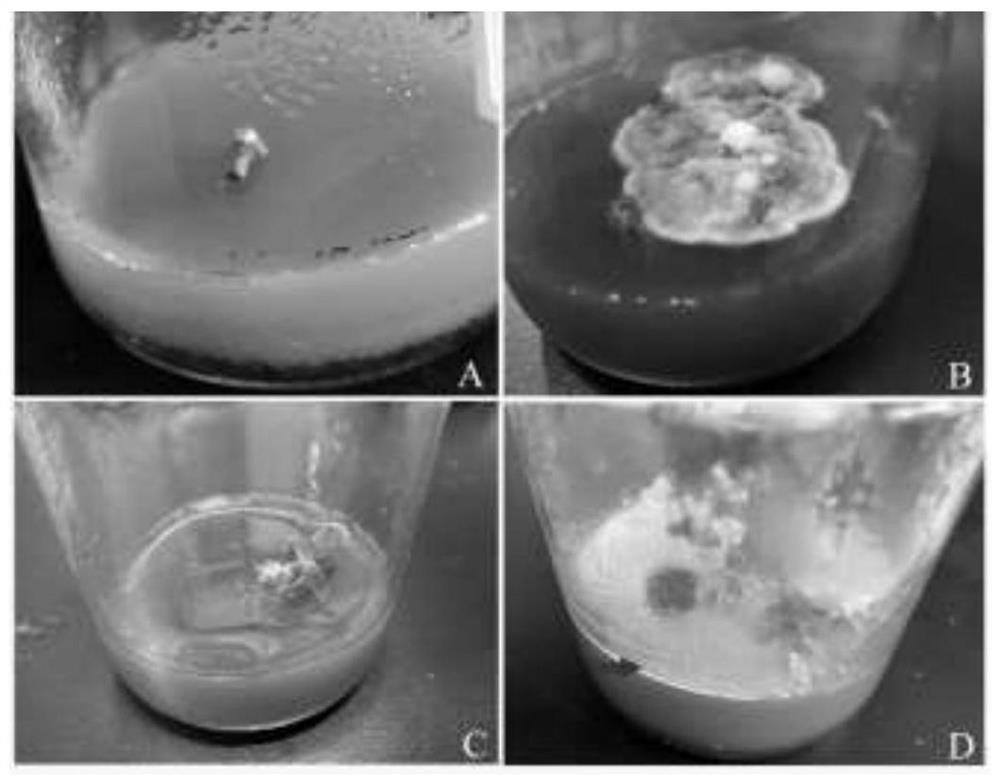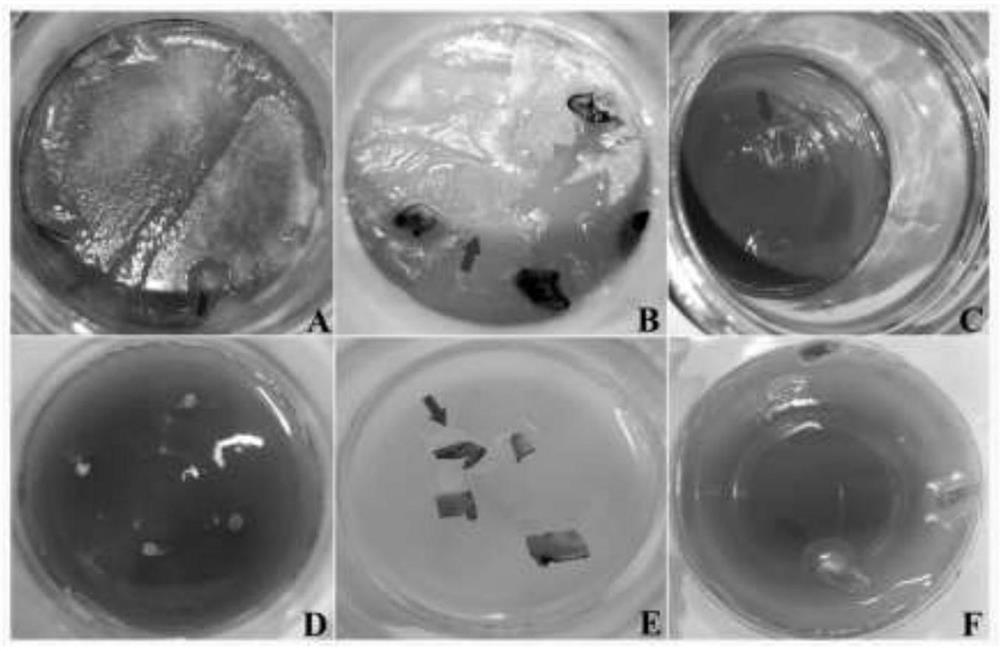Method for preventing and treating aquatic plant tissue culture pollution bacteria
A technology for polluting bacteria and aquatic plants, applied in horticultural methods, botanical equipment and methods, plant regeneration, etc., can solve the problems of manpower, material and financial resources, unfavorable environment, bacterial contamination of tissue culture bottles, etc., and improve the seedling rate. , The effect of reducing the difficulty of operation
- Summary
- Abstract
- Description
- Claims
- Application Information
AI Technical Summary
Problems solved by technology
Method used
Image
Examples
Embodiment 1
[0035] Isolation, Identification and Preservation of Example 1 Bacteria
[0036] By consulting the literature, this example explores and studies the phenomenon of contaminating bacteria in the tissue culture of aquatic plants, and isolates and identifies the dominant bacteria polluted by the tissue culture of aquatic plants.
[0037] In this embodiment, the aquatic plants are collected from the aquatic plants and water beauty supermarket in Weifang City, Shandong Province, and the aquarium equipment is collected from Lujiang Landscaping Co., Ltd., North District, Qingdao.
[0038] In this example, the tissue culture medium is: MS+(1mg / l) KT+(1mg / l)IBA+0.2% activated carbon+3% sucrose+0.65% agar powder; among them, MS was purchased from Qingdao Hi-Tech Industrial Park Haibo Biotechnology Co., Ltd., agar powder was purchased from Beijing Suolaibao Technology Co., Ltd., sucrose was purchased from Sinopharm Chemical Reagent Co., Ltd., activated carbon was purchased from Tianjin He...
Embodiment 2
[0050] The control of embodiment 2 polluting bacteria
[0051] In the above examples, although the explants were strictly sterilized before the tissue culture, severe bacterial contamination was still found after a few days, the contamination rate was as high as 60%, and once contaminated, the bacterial colonies would be very large. The surface layer of the medium and the base of the explants are almost covered, and a large amount of nutrients are consumed, causing the explants to stop growing, and eventually wither and die gradually, seriously affecting the normal growth and differentiation of tissue culture seedlings.
[0052] Add kanamycin (Kanamycin, Kan + , 50mg / μl), ampicillin (Ampicillin, Amp + , 100mg / μl), erythromycin (Erythromycin, Erythromycin + , 250mg / μl), spectinomycin (Spectacular mycin, Spc + , 200mg / μl), chloramphenicol (Chloromycetin, Chl + , 25mg / μl) to inhibit the bacteria, the results are shown in Table 2 below.
[0053] Table 2 Adding antibiotics to ...
Embodiment 3
[0058] The isolation and identification of embodiment 3 fungi
[0059] This embodiment relates to the same test material as in Embodiment 1.
[0060] When white, black, green and other mycelium blocks of different colors appear around the explants or in the culture container, the main source of pollution is fungi, the most common of which are Aspergillus, Mucor and Penicillium, and the main species is Fusarium Phomopsis sp., Phomopsis rot, and Black spot fungus, etc. Such as Figure 4 The results shown are white feathery fungus A1, white lumpy fungus G and blue-black hairy fungus H. These pathogens are mainly transmitted in the form of hyphae, and their pollution characteristics are that the pathogens grow slowly at the initial stage, and it takes about 3-5 days to form obvious hyphae, but after forming obvious hyphae, the hyphae can quickly spread to the whole area after only 2-3 days. Petriware.
[0061] In this embodiment, the fungal strains of the above pollution sourc...
PUM
 Login to View More
Login to View More Abstract
Description
Claims
Application Information
 Login to View More
Login to View More - R&D
- Intellectual Property
- Life Sciences
- Materials
- Tech Scout
- Unparalleled Data Quality
- Higher Quality Content
- 60% Fewer Hallucinations
Browse by: Latest US Patents, China's latest patents, Technical Efficacy Thesaurus, Application Domain, Technology Topic, Popular Technical Reports.
© 2025 PatSnap. All rights reserved.Legal|Privacy policy|Modern Slavery Act Transparency Statement|Sitemap|About US| Contact US: help@patsnap.com



